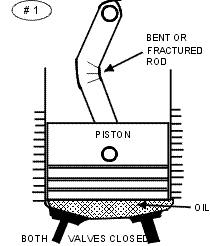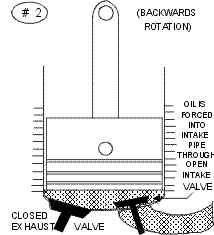 It was one of those good evenings at AirVenture Oshkosh, the kind that reminds you why you return each year. The Pilot’s Lounge had moved bodily to a spot under the wing of Jay Apt’s Twin Beech. We had survived Doc Blue’s birthday party, including the part where he had surrounded the area where the grills were setting grass fires with yellow caution tape labeled “Caution: Men Cooking.” Everyone was calming down after the feeding frenzy and I was pleased that the kids playing with the potato guns had exhausted their ammunition. The talk was good this evening. The subjects were of some importance and the speakers knowledgeable, so I again had an opportunity to learn.
It was one of those good evenings at AirVenture Oshkosh, the kind that reminds you why you return each year. The Pilot’s Lounge had moved bodily to a spot under the wing of Jay Apt’s Twin Beech. We had survived Doc Blue’s birthday party, including the part where he had surrounded the area where the grills were setting grass fires with yellow caution tape labeled “Caution: Men Cooking.” Everyone was calming down after the feeding frenzy and I was pleased that the kids playing with the potato guns had exhausted their ammunition. The talk was good this evening. The subjects were of some importance and the speakers knowledgeable, so I again had an opportunity to learn.
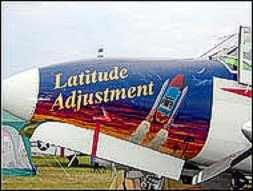 One of the more interesting visitors to the lounge, Randy Sohn, was present. He recounted something he had seen over in the warbird area. One of the more persistent old wives tales relating to round engines had nearly caused a pilot to damage his engine. Fortunately, there were folks nearby who prevented some expensive, foolish behavior. The pilot was pulling the prop through on his very nice SNJ. He felt sharp resistance. He stopped because recognized the problem as hydraulic lock. Of course several people were watching him preflight his bird. He spoke to them, indicated that he had hydraulic lock and said he was going to pull the prop through backwards to “clear the lock.” Naturally four or ten people jumped to assist him. Luckily, a pilot who knew round engines got them stopped before the propeller was moved any more, in any direction, and the engine damaged. Randy watched the ensuing argument over the situation and just shook his head at the incredible power of misinformation in aviation and people who should know better than to pull a radial through to get rid of a hydraulic lock.
One of the more interesting visitors to the lounge, Randy Sohn, was present. He recounted something he had seen over in the warbird area. One of the more persistent old wives tales relating to round engines had nearly caused a pilot to damage his engine. Fortunately, there were folks nearby who prevented some expensive, foolish behavior. The pilot was pulling the prop through on his very nice SNJ. He felt sharp resistance. He stopped because recognized the problem as hydraulic lock. Of course several people were watching him preflight his bird. He spoke to them, indicated that he had hydraulic lock and said he was going to pull the prop through backwards to “clear the lock.” Naturally four or ten people jumped to assist him. Luckily, a pilot who knew round engines got them stopped before the propeller was moved any more, in any direction, and the engine damaged. Randy watched the ensuing argument over the situation and just shook his head at the incredible power of misinformation in aviation and people who should know better than to pull a radial through to get rid of a hydraulic lock.
Randy is adamant about educating people about hydraulic lock because he doesn’t want to see people and equipment get hurt and does not hesitate to say so. So I’ll repeat his comments right up front:
If you detect a hydraulic lock on a radial engine the only certain way to cure it is to remove the lower cylinder spark plugs and let the oil drain out. Pulling the prop through forward WILL result in a bent connecting rod and/or expensive damage to the engine if it does not cause a catastrophic failure. Pulling the propeller through backwards only reduces the chance of a bent connecting rod; it does not eliminate the risk.
Meet Randy Sohn
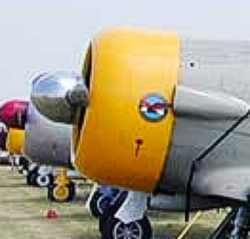 So, who is this Randy Sohn guy under the wing with us and why should anyone listen to him about radial engines? Randy has flight experience many of us would probably commit felonies to have. For Uncle Sam, he flew various radial-engined airplanes (and a few jet-powered ones) including the C-97, the outgrowth of the Boeing Stratocrusier, which itself evolved from the B-29. In the civilian world he wrestled the terrible Great Lakes winters as a pilot for North Central Airlines in DC-3s and Convairs, then, after the first merger, with Republic in DC-9s and Boeing 727s and after the next merger, with Northwest, he flew its massive route structure in DC-10s and Boeing 747s. He was a check airman with the airlines, and approved by the FAA to administer type ratings in a number of aircraft. His approvals expanded until Randy became one of the five NDPERs (member of the National Designated Pilot Examiner Registry) in the world. He can give a type-rating check ride or recommend issuance of an LOA (letter of authorization) in any piston engine airplane built, from the P-51 to DC-3 to PBY to B-29. In fact, Randy is the guy who flew the Confederate Air Force’s B-29 out of China Lake, California, to Texas after it was resurrected from its last military assignment as a target. He is the chief check airman for the CAF. In that position he has flown, taught people to fly and examined pilots who wish to fly every piston-engine bomber, fighter and transport built in this country (assuming one is still flying) and several from other countries. As an NDPER he goes all over the world to administer check rides in some of the most exotic and interesting airplanes you can imagine. Naturally, because he regularly is in airplanes with round engines, the appropriate care and feeding of radials is a subject near and dear to his heart.
So, who is this Randy Sohn guy under the wing with us and why should anyone listen to him about radial engines? Randy has flight experience many of us would probably commit felonies to have. For Uncle Sam, he flew various radial-engined airplanes (and a few jet-powered ones) including the C-97, the outgrowth of the Boeing Stratocrusier, which itself evolved from the B-29. In the civilian world he wrestled the terrible Great Lakes winters as a pilot for North Central Airlines in DC-3s and Convairs, then, after the first merger, with Republic in DC-9s and Boeing 727s and after the next merger, with Northwest, he flew its massive route structure in DC-10s and Boeing 747s. He was a check airman with the airlines, and approved by the FAA to administer type ratings in a number of aircraft. His approvals expanded until Randy became one of the five NDPERs (member of the National Designated Pilot Examiner Registry) in the world. He can give a type-rating check ride or recommend issuance of an LOA (letter of authorization) in any piston engine airplane built, from the P-51 to DC-3 to PBY to B-29. In fact, Randy is the guy who flew the Confederate Air Force’s B-29 out of China Lake, California, to Texas after it was resurrected from its last military assignment as a target. He is the chief check airman for the CAF. In that position he has flown, taught people to fly and examined pilots who wish to fly every piston-engine bomber, fighter and transport built in this country (assuming one is still flying) and several from other countries. As an NDPER he goes all over the world to administer check rides in some of the most exotic and interesting airplanes you can imagine. Naturally, because he regularly is in airplanes with round engines, the appropriate care and feeding of radials is a subject near and dear to his heart.
To overuse a clich, when Randy speaks, those who operate round engine airplanes listen very carefully.
What Is Hydraulic Lock?
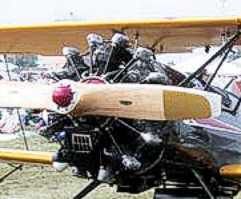 I admit it; I’m not a genius around engines. In fact, after Randy paused in his description of the pilot and his SNJ, I asked him to explain to me just what hydraulic lock was and why it was a big deal. He did: Very simply, hydraulic lock affects radial engines because the cylinders stick out around the central crankshaft in a star-like arrangement. When the engine is mounted so that the crankshaft is more or less horizontal, there are cylinders that point downwards. Radial engines use a great deal of oil for lubrication; you measure the amount in gallons, not quarts as we do in opposed engines. After shutdown, there is significant oil in the engine. By various routes some of this oil can and does find its way to the combustion chambers of the cylinders that are pointed downward.
I admit it; I’m not a genius around engines. In fact, after Randy paused in his description of the pilot and his SNJ, I asked him to explain to me just what hydraulic lock was and why it was a big deal. He did: Very simply, hydraulic lock affects radial engines because the cylinders stick out around the central crankshaft in a star-like arrangement. When the engine is mounted so that the crankshaft is more or less horizontal, there are cylinders that point downwards. Radial engines use a great deal of oil for lubrication; you measure the amount in gallons, not quarts as we do in opposed engines. After shutdown, there is significant oil in the engine. By various routes some of this oil can and does find its way to the combustion chambers of the cylinders that are pointed downward.
Another source of liquid in the combustion chambers of the lowest cylinders is from a pilot overpriming the engine and filling the cylinders with gasoline. (This can happen in horizontally opposed engines as well, but that’s beyond the scope of this column.)
So there is liquid in the combustion chambers of the bottom cylinders, what’s the big deal? When the piston comes up (down when the cylinder is upside down) to Top Dead Center (TDC) in the compression stroke, just before the spark plugs fire and the power stroke occurs, the actual space available in that combustion chamber reaches its smallest dimensions. Also, because it is the compression stroke of the power cycle, the intake and exhaust valves are closed so that the piston can compress the fuel/air mixture in preparation for it to be blasted into usable power. If there is more liquid in that cylinder than there is space available when the piston gets to TDC there is a very serious problem. Liquids are incompressible. The space is getting smaller. The valves are closed. Something has to give. That something is most likely going to be the connecting rod that is pushing the piston toward TDC. Take a look at Figure 1, below. (Other things may bend as well, but I’ve only got so much time to write this column and I won’t cover everything that can get damaged.)
A hydraulic lock is simply too much liquid in the combustion chamber. It leads to a bent connecting rod. Once the connecting rod is bent the engine is going to fail. That’s a basic fact. It may run for a few months, or it may quit within minutes. It depends on the nature and degree of the damage to the rod.
So, why do you see pilots pulling the propeller through on a radial engine before startup? Two potential reasons: the pilot knows precisely what he or she is doing and is s-l-o-w-l-y pulling the prop through to feel for any sudden rise in resistance that is not the normal buildup of compression. The other reason is that the pilot has seen folks do it and figures he might as well do it, too.
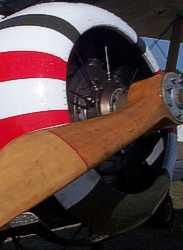 Pulling the prop through can cause damage to a connecting rod if there is a hydraulic lock simply because of the mechanical advantage available to the person handling the prop. The prop itself is a very long lever. It allows amazing force to be applied within the cylinder. As part of Randy’s efforts to stamp out hydraulic lock in our lifetime, he and some very good radial engine folks did their sums and found that on a Pratt and Whitney R-1340 radial, not only will just 3/4 of a pint of oil create a hydraulic lock, but 50 pounds of force on the propeller, at the tip, will generate 900 pounds of force in the cylinder at 90 degrees before top dead center. As the piston approaches TDC, the force generated increases exponentially. At just 10 degrees before TDC, the force is 11,000 pounds. In the last ten degrees of travel, the force approaches infinity. There is far more than enough force generated for a mere mortal to bend a connecting rod when pulling a propeller through before startup.
Pulling the prop through can cause damage to a connecting rod if there is a hydraulic lock simply because of the mechanical advantage available to the person handling the prop. The prop itself is a very long lever. It allows amazing force to be applied within the cylinder. As part of Randy’s efforts to stamp out hydraulic lock in our lifetime, he and some very good radial engine folks did their sums and found that on a Pratt and Whitney R-1340 radial, not only will just 3/4 of a pint of oil create a hydraulic lock, but 50 pounds of force on the propeller, at the tip, will generate 900 pounds of force in the cylinder at 90 degrees before top dead center. As the piston approaches TDC, the force generated increases exponentially. At just 10 degrees before TDC, the force is 11,000 pounds. In the last ten degrees of travel, the force approaches infinity. There is far more than enough force generated for a mere mortal to bend a connecting rod when pulling a propeller through before startup.
To make matters worse, round engines have a certain cachet. When someone is preflighting an airplane equipped with a radial, interested helpers seem to crawl out of the woodwork. They are more than willing to assist in pulling a prop through. Desiring to appear diligent, they heave with great gusto. If there is resistance, if they assume it is anything, they figure it is compression, and push harder. Bend. Oops. They have just created a boat anchor, in the best case, or a potential catastrophe in the worst.
If the engine will start, and it probably will, it is going to quit. Dramatically. Usually it simply seizes at some point. Randy gave me an engine teardown report from a lunched radial engine. I thought the description of the condition of the moving parts was particularly appropriate:
“The inside of the engine was a scene of almost total devastation. At least three connecting rods had broken and numerous pieces of rod, piston and piston ring were loose inside the crankcase. Most of the material recovered from the inside of the engine exhibited clean, recent looking breaks and cracks where failure had occurred. An exception was the piston and rod identified as being from the number 5 cylinder. (Note: the bottom cylinder on this engine.) These items differed in that the rod had failed in compression, rather than in tension, and in the fact that in the area of the break in the connecting rod and the piston skirt there was evidence of polishing such as is caused by these components having been in contact with other moving parts of the engine for some time.
“The engine displays what might be termed the classic symptoms of a hydraulic lock. It is hypothesized that the following sequence of events led to the failure…”
“The number 5 connecting rod was bent due to hydraulic lock such that it came into contact with the base of the cylinder wall. During the accident flight the number 5 rod gave way. The number 5 piston and the section of rod still attached to it entered the crank case and became entangled in the crankshaft/master rod assembly causing extensive damage to that section of the engine. The remains of the number 5 piston then became lodged underneath the number 7 cylinder in such a way as to prevent the number 7 piston from completing its downward stroke. At this point, the engine came to an almost instant stop. The large angular momentum of the constant speed propeller caused the prop shaft to fail in torsion, thereby disconnecting the prop from the gearbox and permitting it to freewheel.”
I suspect that the sounds that accompanied all of that were more than enough to get a pilot’s undivided attention.
Is it possible to tell if you are about to fly an engine that has a bent rod due to hydraulic lock on a previous occasion? Symptoms don’t always appear; however, always take a close look at the base of the cylinders. If you see any sign of oil seepage or looseness around that cylinder base(s), or if any of the studs look as if they have been stretched or distressed, have a mechanic look things over before you fly.
Detecting And Preventing Hydraulic Lock
So, what’s a pilot to do? First of all, detection of hydraulic lock is in order. It must be understood that hydraulic lock affects tailwheel and nosewheel airplanes. There are some folks running around that say hydraulic lock does not occur on nosewheel airplanes. That is absolutely untrue. We lost B-25s and B-29s in World War II because some crew chiefs either didn’t detect or didn’t deal with hydraulic lock correctly and engines failed. Randy operates a PBY Catalina, and explained that he has to take action to detect hydraulic lock on that nosewheel airplane where the engines are many feet in the air. It affects the folks operating the Constellations so lovingly restored as well as my friend’s Nakajima CJ-6.
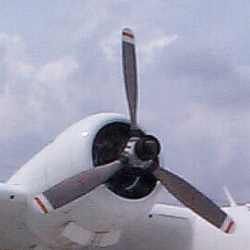 One way to detect lock is by pulling the propeller through slowly and feeling for it. Another is to bump the engine through several “blades” with the starter. On most (but not all – you have to know your starter) radial engines the starter clutch is set at a low enough level that the prop will noticeably drag or bounce if the piston strikes oil so the pilot can immediately release the starter. This must be done one blade at a time, as once the starter has turned through two blades or so, there may be enough inertia in the process that the engine may motor through a locked cylinder with nary a quiver but with a bent rod.
One way to detect lock is by pulling the propeller through slowly and feeling for it. Another is to bump the engine through several “blades” with the starter. On most (but not all – you have to know your starter) radial engines the starter clutch is set at a low enough level that the prop will noticeably drag or bounce if the piston strikes oil so the pilot can immediately release the starter. This must be done one blade at a time, as once the starter has turned through two blades or so, there may be enough inertia in the process that the engine may motor through a locked cylinder with nary a quiver but with a bent rod.
So, what do you do to get rid of hydraulic lock? There is only one sure and certain way. Drain the bottom cylinders. Pull one spark plug out of each cylinder and pull the prop through several full rotations. Then, with the magnetos off, use the starter to turn the engine through several more rotations. Start the engine with those plugs out and run the engine to about 1,200 rpm and then shut it down. Clean up the mess, put the spark plugs back in and go fly. Yes, if you are operating a corncob radial, that is one with four rows of cylinders, it means pulling a spark plug from each of those bottom cylinders. Notice, I said this is the certain way to prevent engine damage due to hydraulic lock; I said nothing about it being the fun part.
You absolutely CANNOT get rid of hydraulic lock by pulling the propeller through by hand. That is a dangerous old wives’ tale. It has a life of its own and it needs to be stomped to death. A widely-respected aviation writer in a highly-regarded aviation publication recently repeated it. Pulling a prop through by hand, as I said above, will bend a connecting rod if there is too much liquid in the combustion chamber of a cylinder.
You cannot be certain of getting rid of hydraulic lock by pulling the prop through backwards. Backing the propeller is another old wives’ tale. It has resulted in the creation of a lot of scrap metal formerly known as engines. If hydraulic lock is present, the pilot notices it on a compression stroke when gently pulling the prop through and then moves the prop backwards, that cylinder will next experience an intake stroke. (Remember, the propeller is being turned backwards.) The intake valve opens. Depending on the temperature and the viscosity of the oil in the combustion chamber, some or all of it will flow into the intake manifold. See Figure 2, below. You have just created a time bomb.
The oil that you have just drained into the intake manifold has to go somewhere. It is going to go back into the combustion chamber. It is also going to go in with gasoline. That is a liquid. As the engine is started there is a very good chance that the liquid residing in the intake manifold will flow back into the combustion chamber in sufficient quantity to create a hydraulic lock. You are engaged in the aviation game of chance: “Will it lock this time?” Some people are lucky and get away with pulling the prop backwards several times. Some get a lock the first time they try the procedure.
Yes, I know, there are one heck of a lot of people who subscribe to the pulling the propeller backward theory of getting rid of hydraulic lock. However, if you read the Wright engine technical manuals, most military engine technical manuals and even the manual the British put together for flying their version of the Flying Fortress, you will see that the procedure is prohibited. There are some military manuals that advocate the procedure, that’s true, and there are a lot of radial engine operators who think the procedure works. I’ve also gotten word of a post mortem performed on an engine of a museum’s airplane in which their radial engine folks insisted that the engine “just self-destructed.” They insisted because they were certain it was perfectly okay to pull the prop backwards when they detected a hydraulic lock before the flight in which the engine failed catastrophically. There are also ground crews that were on Saipan and Tinian who assert that we would never have gotten so many B-29s into the air had the crews not pulled the props through backwards to relieve hydraulic lock. Keep in mind that the huge, 3,350 cubic-inch engines on those airplanes had a horrible reputation for reliability. Part of it may very well have been due to the act of pulling them through backwards, rather than pulling spark plugs, when hydraulic lock was observed. Randy told me about one B-29 commander from Tinian who, to this day, wants to get his hands on the crew chief that pulled an engine through backwards before startup. He had the joy of ditching shortly after takeoff when it disintegrated.
It must also be kept in mind that the procedure was used to get more airplanes into the air when engines, airplanes and, yes, flight crews, were expendable. Many crew chiefs that turned propellers backwards to get rid of hydraulic lock knew the risk. Those chiefs were facing a situation in which a bent rod was almost a certainty. They could reduce that near certainty to a “pretty good chance” of a bent rod. For the situation those men faced, backing a prop was acceptable given the time available to deal with the problem. And, yes, there were a few careless ones who simply didn’t care and were too lazy to pull spark plugs.
That Was Then…
The engines, airplanes and crews are no longer expendable. The engines are very expensive. Time is something we have. Merely reducing the odds of a bent rod is not acceptable, particularly when pulling some spark plugs can eliminate the risk.
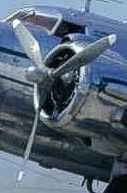 Interestingly, the Russians must have understood hydraulic lock pretty well. Despite an overall reputation for some rather confused behavior, they are known to build very good engines. The M14P in the Yak 18T has drains built into the intake manifolds (pipes) of the bottom three cylinders. On that airplane, the procedure for dealing with hydraulic lock is to remove one spark plug from the bottom cylinders and remove the drain plugs from the intake pipes and then turn the propeller three or four revolutions. I noticed that the presence of drain plugs on the intakes didn’t cause the manual to recommend pulling the prop through backward at any point. It also didn’t do away with the need to remove spark plugs.
Interestingly, the Russians must have understood hydraulic lock pretty well. Despite an overall reputation for some rather confused behavior, they are known to build very good engines. The M14P in the Yak 18T has drains built into the intake manifolds (pipes) of the bottom three cylinders. On that airplane, the procedure for dealing with hydraulic lock is to remove one spark plug from the bottom cylinders and remove the drain plugs from the intake pipes and then turn the propeller three or four revolutions. I noticed that the presence of drain plugs on the intakes didn’t cause the manual to recommend pulling the prop through backward at any point. It also didn’t do away with the need to remove spark plugs.
As I’ve noted in previous columns, the generation that grew up with round engines is slowly passing on to clearer skies. Pilots who were not raised around them and have not had intensive training in them are operating those magnificent engines. Some of the results have been expensive. So, let’s see if we can kill the idea that you pull the prop through on a radial to get rid of hydraulic lock.
See you next month.


































